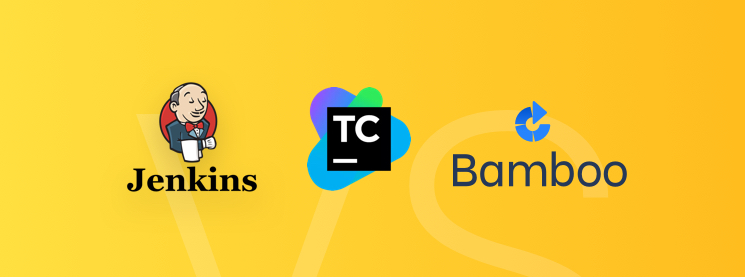

- #JENKINS VS TEAMCITY MANUAL#
- #JENKINS VS TEAMCITY SOFTWARE#
- #JENKINS VS TEAMCITY LICENSE#
- #JENKINS VS TEAMCITY SERIES#
So if all you need is a local build server instance in your machine, to build your java projects, you're pretty much done. Out of the box configuration of Jenkins allows you to pull your sources from CVS, Subversion and local filesystem build Ant or Maven driven java builds and execute shell/command line commands and scripts. JenkinsAfter you've installed Jenkins in the manner outlined in a previous article, you can open your browser, point it at the and you are presented with a Dashboard, where you can immediately start by adding new build projects. The authors of TC have done a fairly good job of explaining it all.
#JENKINS VS TEAMCITY MANUAL#
Migration in general is a tedious process, involving backing up data, stopping and re-starting server(s) and generally doing lots of manual labor. TeamCity supports HSQLDB, MySQL, Oracle, PostgreSQL, Microsoft SQL Server 2005, 2008 and Sybase the migration is possible between any of these databases. In short, if the current DBMS you has some data, you do not want to lose and you need to migrate it to another database for whatever the reason. The second one is what you'll do if you have run for a while, have some projects and users configured, etc.

It is a good database in it's own right and has it's strengths in the situations where you would need a fast and tightly integrated in-process DBMS embedded into your Java application, but running a production server on HSQLDB is. If you use internal (or external) Jabber service for instant communication, you can also set it up by filling out a similar form under the "Jabber Notifier" tab.ĭatabaseBy default, the TC installation comes with embedded Hypersonic SQL DB (HSQLDB for short). Then click on the "EMail Notifier" tab, fill in your e-mail SMTP gateway details, press "Test connection" to. It leads you to Administration > Server Configuration section. Just follow the link that says "configure email and Jabber settings" in the Overview page. In Out of the box configuration you can set up your e-mail and Jabber notifications. However, not everything is configured, as is also suggested by the projects initial project overview page.Įmail and IM notifications.One of the nicest things about CI services is that they can notify you proactively if you need to know of some important events like builds or test failing or some such. Fill in details for admin user account and press "Create account" buttonĪfter this really simple initial set-up wizard you're basically configured with a simple authentication scheme, have created one administrative account and are ready to go.
#JENKINS VS TEAMCITY LICENSE#
#JENKINS VS TEAMCITY SOFTWARE#
This time I'll try to cover the post-installation configuration steps I need to make before I can start putting some builds into them.ĬonfigurationNo server software is usually useful out of the box in and by itself. In my previous post I briefly introduced the contenders open source developed Jenkins and a commercial offering from JetBrains called TeamCity and compared their respective installation experience.
#JENKINS VS TEAMCITY SERIES#
This is a second installment in a series of posts that tries to compare two continuous integration and build automation server products.


 0 kommentar(er)
0 kommentar(er)
